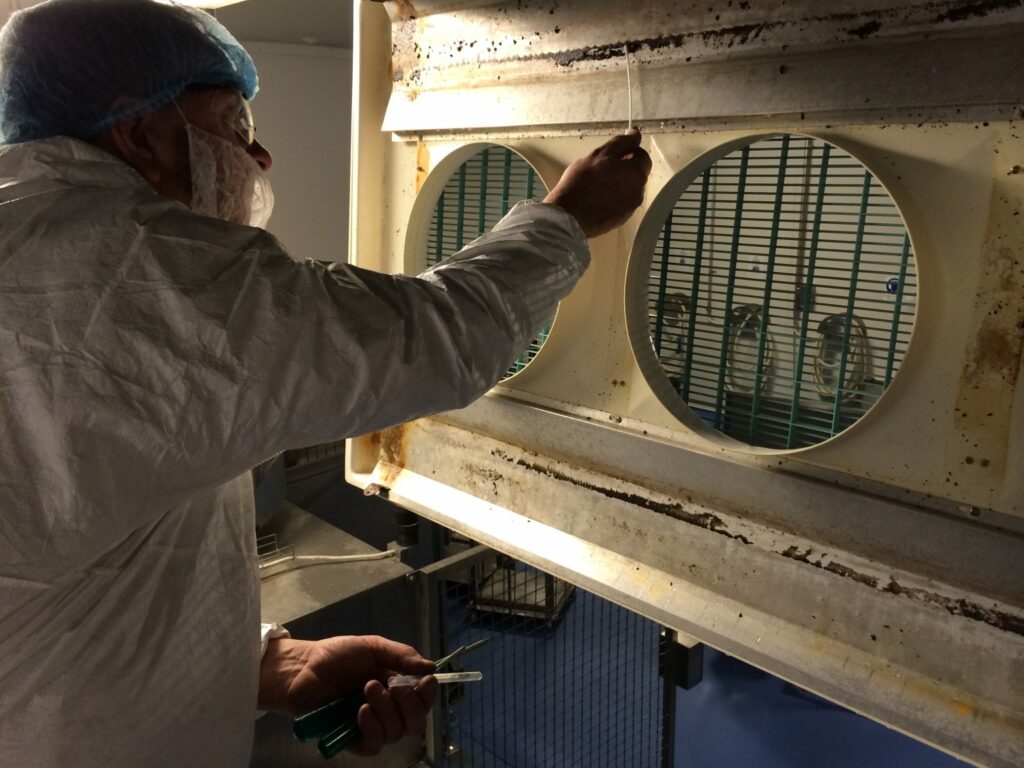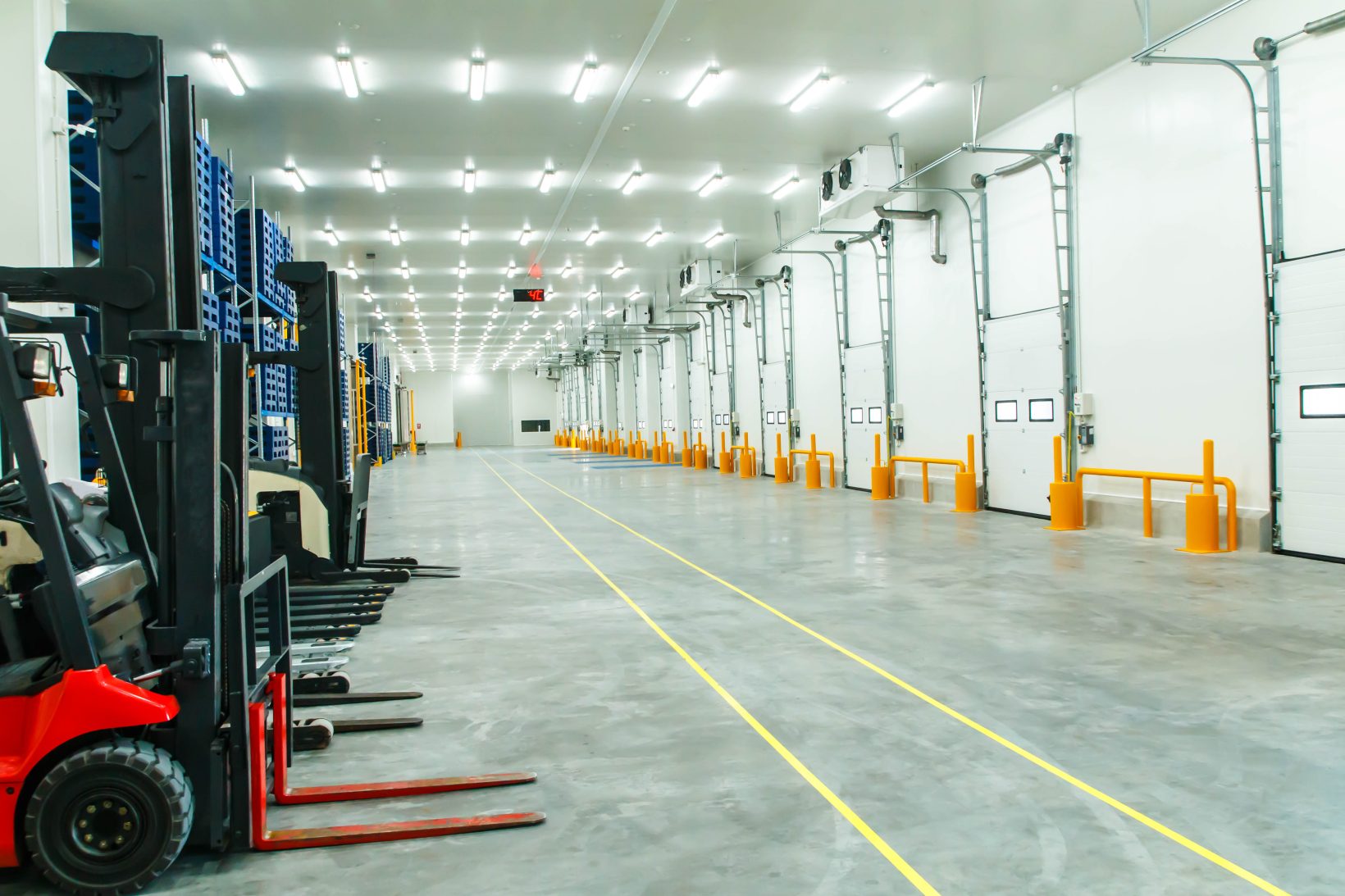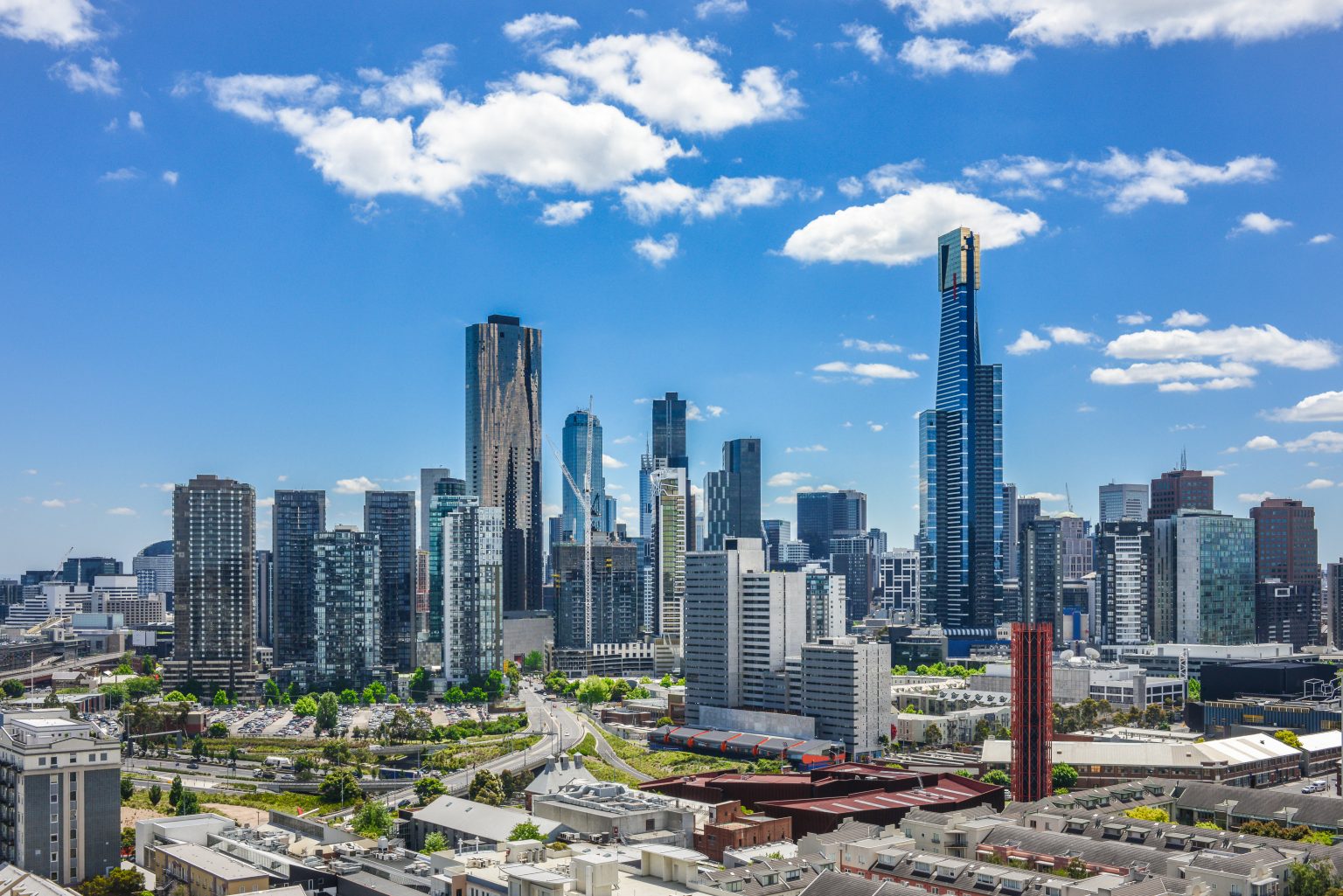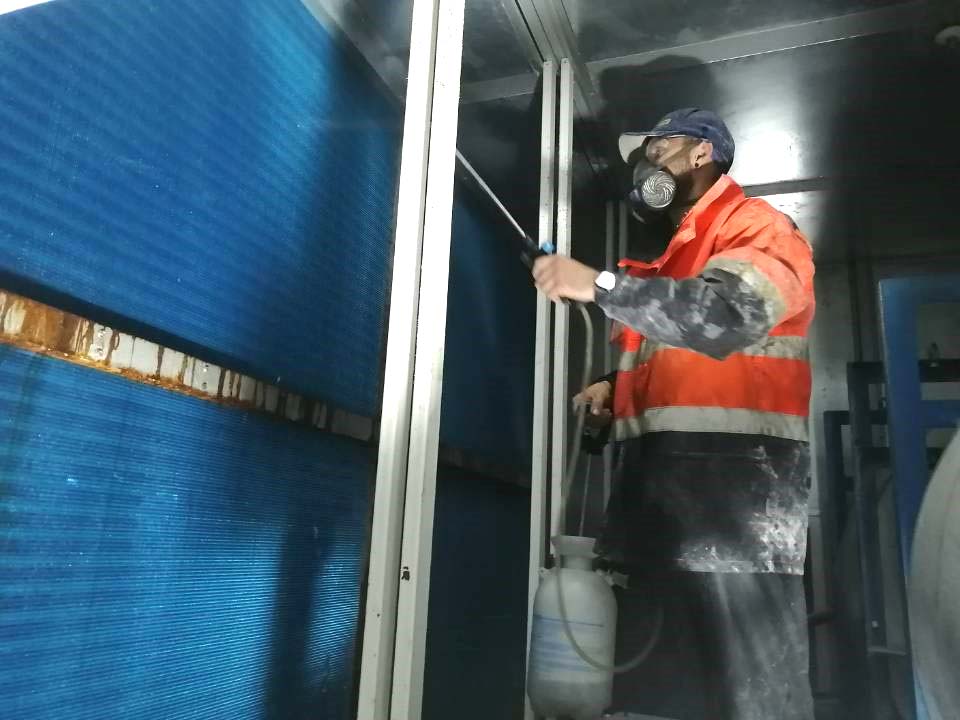 When it comes to dealing with food and beverage storage in cool rooms, hygiene is extremely important, which is why it is critical to have all the necessary hygiene procedures in place and all your ducks in a row, otherwise the consequences of getting this wrong can be catastrophic.
When it comes to dealing with food and beverage storage in cool rooms, hygiene is extremely important, which is why it is critical to have all the necessary hygiene procedures in place and all your ducks in a row, otherwise the consequences of getting this wrong can be catastrophic.

Fan coil units spread bacteria and mould in all cool room spaces
Coolclean is a Melbourne-based company that specialises in cooling equipment hygiene and one specialist area is cool rooms. Their primary focus is on hygiene which encompasses, food safety, food quality, increasing produce self-life, cooling performance, energy cost savings, and dependability. They have developed problem-solving expertise over the course of 33 years offering their customers cost-effective solutions along with important detailed service reports for food safe auditing.


Outside may look clean but inside needs addressing to pass the auditing for food safety
Image of a fan coil unit before cleaning at a cold/cool storage facility
New Coolclean Team Expert
To dive deeper into cool room hygiene, we had the opportunity to chat with Grant Nichols, one of the newest members to join the Coolclean team as the business manager. While Grant is new to Coolclean he is certainly not new to this space, coming from a background of extensive knowledge in all things hygiene. Grant has 25 years of experience as a food & beverage production hygiene specialist, cooling tower and cooling system manager, heavy industry, light industrial, power generation and commercial institutional applications. Was a qualified air conditioning and refrigeration mechanic with the airforce so knows HVAC as well.
As the Business Manager at Coolclean, Grant wants to discuss the importance of coolroom hygiene and how owners and managers must and can avoid all biological and mould risks.
Indeed, chatting with Grant became extremely insightful when he shared some stories with us of his experience over the years, dealing to solve many cases of poor hygiene in cool rooms.
“There are many stories I could tell you, and one that comes to mind straight away was a job we had somewhere locally in Victoria. Straight away from assessing the cool room fan coil unit we were able to see that there had been incorrect chemicals used last time it had been cleaned by a refrigeration contractor which resulted in all the coils cooling fins being almost completely dissolved! You can only imagine the owners confused angry state when he found out that he had to replace the entire unit because the cleaning chemicals were corrosive.
Another time where inappropriate chemicals were used and the wrong measurements calculated because of lack of experience, and it ended up causing a major problem at an abalone plant, which resulted in a massive loss of abalone product which set the business back big time. Hygiene is critical and getting in done correctly and safety is even more critical”.
Why Coolroom and cooling equipment hygiene is important
When learning about keeping the cool room hygiene up to scratch, it’s important to understand why Coolclean do it.
In this case, there are many benefits such as:
Cool room surfaces and fan coil unit equipment performance and hygiene deteriorate over time. Furthermore, dirt, mould, and bacterial growth can accumulate on the cool room ceiling, walls, and coil surfaces inside the fan coil units.
Grant made some interesting comments about indirect costs that cool room owners don’t see happening.
“Neglecting hygiene by not disinfecting, cleaning, and treating your cool room and equipment not only exposes the stock to contamination, but it also increases your power consumption and cost by up to 50%. To get to a 50% power usage increase can take a few years but when you consider that this performance loss starts the day after the last Hygiene clean was done, well you won’t see it happening if you don’t look for it. Is it 10% after a year, 20% year two? Hard to measure as who knows how to measure the amount of airborne dirt, bacteria, mould, pollen, vehicle exhausts are being sucked into the fan coil units or deposited on surface each DAY”.
Well, think I would be checking my power bills at home if this was happening to me. Could save 50% off my $500 quarterly account, that’s $250 in my pocket. Not sure what the cool room owners pay for power each quarter.
You can avoid the above scenarios and expenses by disinfecting cleaning and treating your cool room surfaces and cooling equipment on a regular basis.

Fan coil units at a cold/cool storage facility

Penthouse unit at a facility
Bonus:
- Improved airflow and air quality for the staff on site
- Increased cooling capacity and performance
- Consistent and accurate temperature control
- Elimination of contaminants after hygiene service
- Mould-free surfaces and equipment after hygiene service
- Lowered risk of food spoilage caused by touching and spreading bacteria and mould on contaminated surfaces, boxes, pallets, plastics
- Prolonged product shelf life of product and produce.
- Less power costs
- Reduce cooling equipment replacement caused by excessive operating times to achieve the cooling performance. Blocked coils make fan coil units run twice as hard and longer to get the original design duty.
- Fan coil units spread bacteria and mould around cool rooms. Reduce staff illness

Coolroom hygiene Risks
Mould grows within your cool room due to three main reasons.
Number one reason: Mould spores enter the cool room space from the air, on goods being delivered into the space, on vehicles such as truck and forklifts, personnel clothing.
Number two reason. The cooling equipment recirculates the mould around the room by drawing airborne spores into the cooling coils and discharging the cooled air out of the unit.
Number three reason. The mould grows and proliferates in the fan coil units, on the cool room surfaces, and on racking.
Cleaning complications
Upper surfaces are too hard to reach, racking is difficult to reach, there are cracks in panels, panel joints leaks, or damaged seals around the door, which allow warm, humid air into the room. The best way to manage a mould problem is to prevent it from occurring in the first place, so it’s critical to have your cool room hygiene cleaned by experts on a regular basis.
While there is no regulation requiring cool rooms to be cleaned at regular intervals, Grant stated that the recommended time to clean cool rooms and the cooling equipment is from 6 months to 12 month period to optimise the cool rooms cooling performance, the lifespan of the panels, and the lifespan of the FCU and evaporators.
Coolroom Hygiene certifications & Depth of the team’s Experience
Coolclean takes pride in their HACCP certification. They have been fully certified since 2018 (5 years), which means they have all the knowledge and experience needed and also why they believe the HACCP certification is so important for not only the food industry, but also the cool room storage industry and the cooling tower industry.
Coolclean’s HACCP Certification includes air handling units, ducted air conditioning, chillers, fan coil units, evaporators, exhaust fans, cooling towers, cool rooms, cold stores, cold storage facilities, an$ tanks pits vessels.
The Coolclean on-site technicians have also completed the HACCP training course, ‘Introduction to Food Safety Concepts and its Application in Cleaning Cool Rooms and Refrigeration Equipment and as such have a huge depth of experience that really sets them apart.
As a result, all Coolclean services are certified as food-safe and suitable for meeting the cleaning and sanitisation needs of businesses operating a HACCP-based Food Safety Program.

Fan coil unit above chicken processing line
Exposure in the Food Safety industry
Grant mentioned that one of the many safety aspects for which Coolclean used their HACCP certification was food safety.
Food safety without a doubt has a very high exposure rate, where items can quickly become perishable, form bacteria, and can cause severe health issues for everybody exposed including the public.
Other things considered are “when cooling rooms or the FCU evaporators units’ ice up, or the tray is full of dirt, the water produced cannot go down the drain line properly, and so spills out on the floor below freezing and becoming a big safety risk” “For example, forklifts or people driving over them can slip, freezing also causes damage to the panels, joints, parts, as the water expands when it freezes, adversely affecting the lifespan of the cool room panel as well”.
There are business owners taking big risks out there either because they are unaware of bad cleaning practices, or they are not compliant with a proper hygiene regime and process.
Grants advice is to get an expert in to inspect your coolroom and provide a detailed report on what needs to be done.


Before cleaning After cleaning
Penthouse unit airflow regulators
Coolroom hygiene products
Cleaning products may appear to be simple to use and understand, but there is much more to them than spraying and wiping down your cool room. A coolroom expert will be able to clean the coils, trays, drains, and interior surfaces thoroughly, as well as thoroughly clean the cool room.
Coolclean technicians carry specialised equipment to perform work efficiently and with minimal disruption to your business. To effectively remove contaminants, the cleaning process includes the use of an anti-microbial biocide approved by HACCP and CSIRO.
Controlled measures are critical because there are numerous risks that our trained experts may face, such as confined spaces, operating access equipment such as EWP’s and working at heights. Having the proper training for these risks can literally be a matter of life and death, which is why hiring professionals is the only way to get this done properly and, more importantly, safely.

Coolroom cleaning method
Grant explained that there are many steps that must be taken before beginning the cleaning process that are just as important as the cleaning procedure itself, which can include everything from
- isolating equipment before the cleaning process begins
- Covering and protecting stored goods to stop cross contamination
- putting on protective clothing
- pre-washing access and cleaning equipment,
- and ensuring that everyone who enters is properly disinfected.
Grant also made a point of saying that it’s always important to provide appropriate cleaning and disinfecting products, as well as personal protective equipment, to your employees and ensure that they are trained on how to use them.
It is common knowledge that contamination is a common cause of food deterioration. Contamination in cool rooms is primarily caused by dirty walls, ceilings, evaporators, and fan coil units. When cooling units need to be cleaned, the coils are usually clogged with bacteria and debris. Condensation pans and drain line lines are actively growing bacteria and mould.
Steps for Cleaning/post cleaning Cool Rooms
- Disassembling the units and cleaning the fan coil unit, condenser box’s interior and exterior, as well as the fan grills, fans, and cooling exchange coils. Mould and bacteria samples from before and after cleaning can also collected at request by our team to stop the need for site operators to get up there to do this
- At the client’s request, clean the cool room’s walls, ceiling, and floors.
- Keep the HVAC/R unit’s interior and exterior clean.
- Take out the fans and motors and clean the safety grill and the fan blades on both sides.
- Clean coils for heat transfer, cool and clean.
- Unplug drain lines and flush them.
- Keep the fan unit’s interior and exterior surfaces clean.
- Take out and wipe the drip tray for condensation. Install a condensate pan tablet to manage pollutants like mould and bacteria
- Scrub the area around the fan unit.
- Pre- and post-cleaning images are provided along with a thorough service report.
- Making that the work adheres to AS/NZS 1668.2 and AS/NZS 3666.2
Make sure your coolroom is in the hands of the industry specialists give Grant or the guys at Coolclean a call! Coolclean cooling equipment system Hygiene experts are always looking out for their clients, providing the highest quality service possible and always making sure that Hygiene and health are always front of mind.
CONTACT US
Melbourne
Unit 21, 21-22 National Drive, Hallam VIC 3803
+61 03 8765 9500
service@coolclean.com.au





